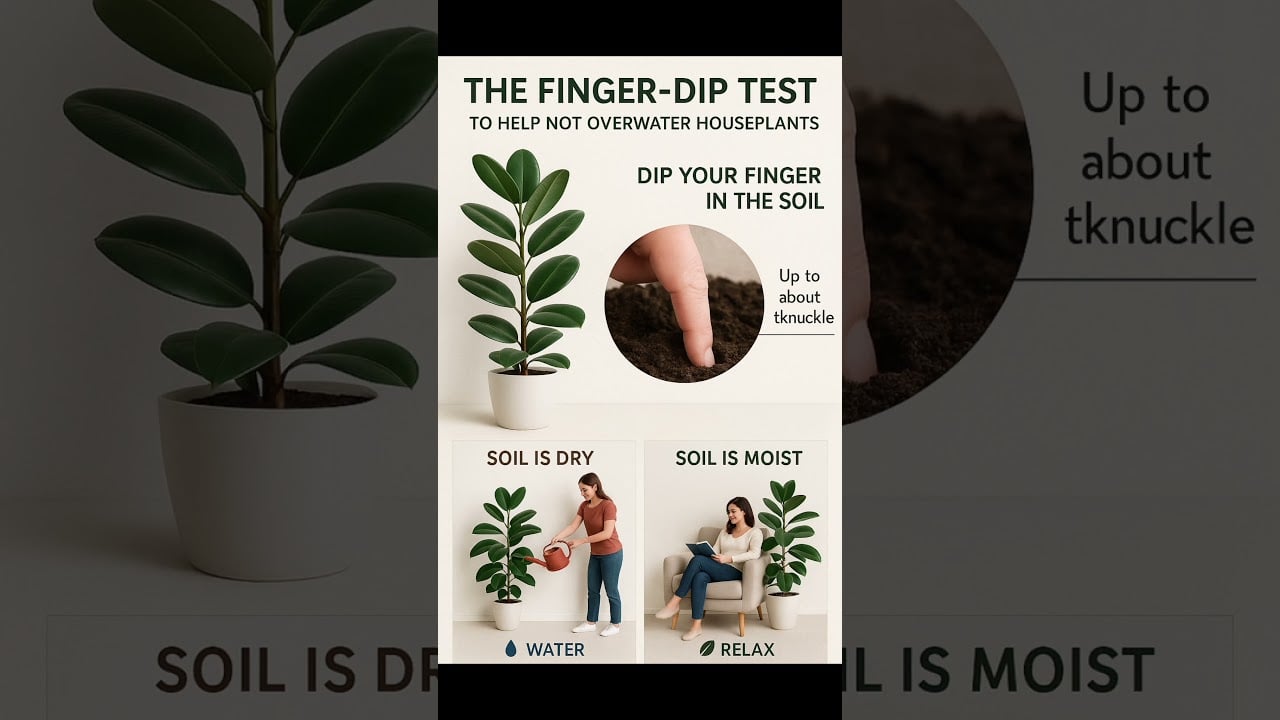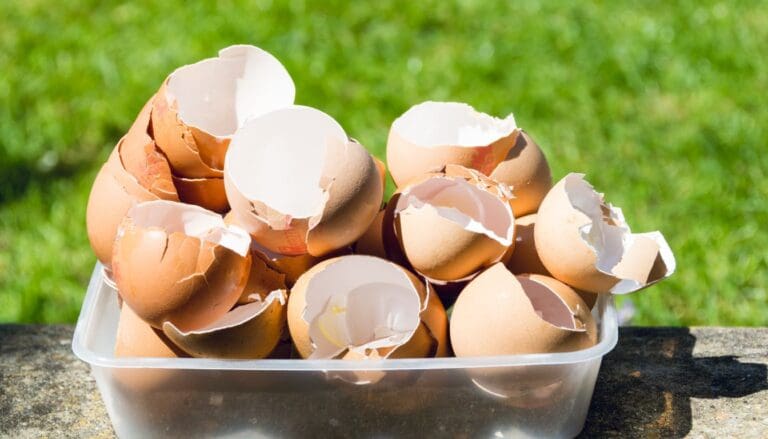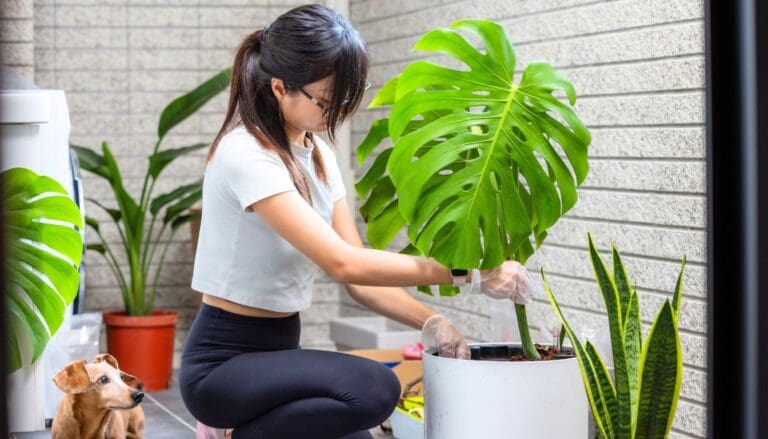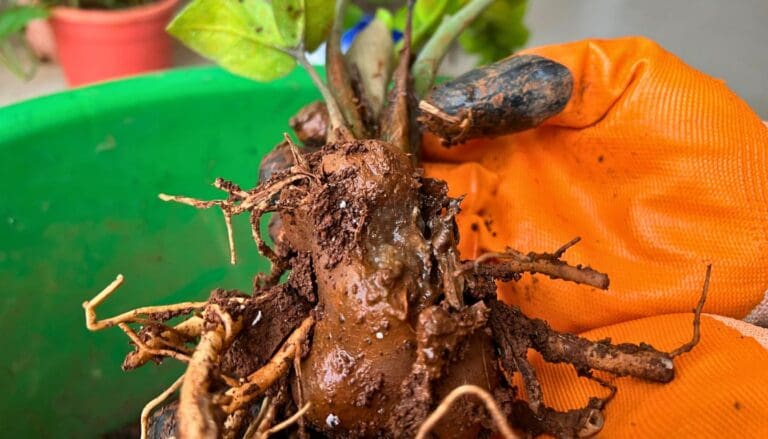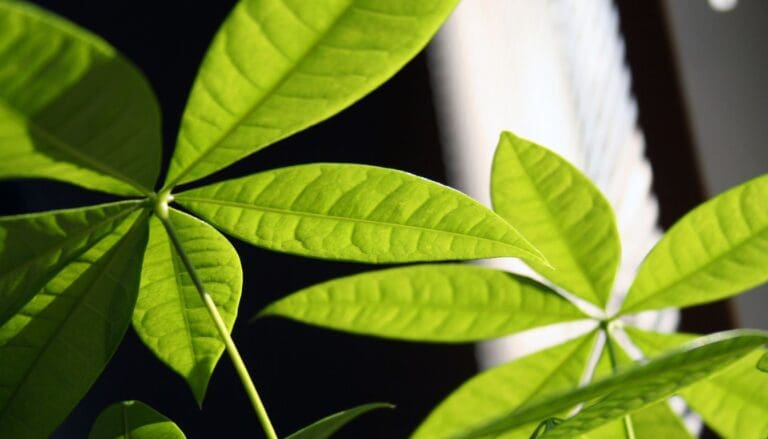6 Tips to Avoid Overwatering in Cooler Months
Honestly, it’s way too easy to give our plants more water than they need, especially when the weather gets chilly.
You might feel like your plants want the same care year-round, but trust me, the seasons really change things up.
Learning how to avoid overwatering keeps my plants happier and a whole lot healthier in those cooler months.
Just a few tweaks to my watering habits can make all the difference for strong roots and fewer headaches.
Please note: Simplify Plants is reader-supported. As an Amazon Associate, I earn from qualifying purchases made by our readers with no extra cost added to you all! Some links in the post are affiliate links and I get a commission from purchases made through links in the post.
1) Check soil moisture with a finger test before watering
I usually rely on the finger test to check the soil before reaching for my watering can. It’s quick, simple, and honestly, it saves me from watering when it’s not needed.
I just poke my finger about an inch or two down. If the soil feels dry at that depth, then it’s probably time to water.
If there’s any moisture or coolness, I skip watering for now. Wet soil means the plant is good for a while.
The top layer can fool you since it dries out fast, especially in winter. That’s why pressing deeper tells me what’s actually going on.
This simple test just works. No gadgets required.
I try to check each plant individually, especially the ones near windows or heaters. Their soil dries at different speeds, so I never assume they all need the same thing.
Making this a habit really helps me avoid watering mistakes in the colder months.
2) Reduce watering frequency to once every 10-14 days
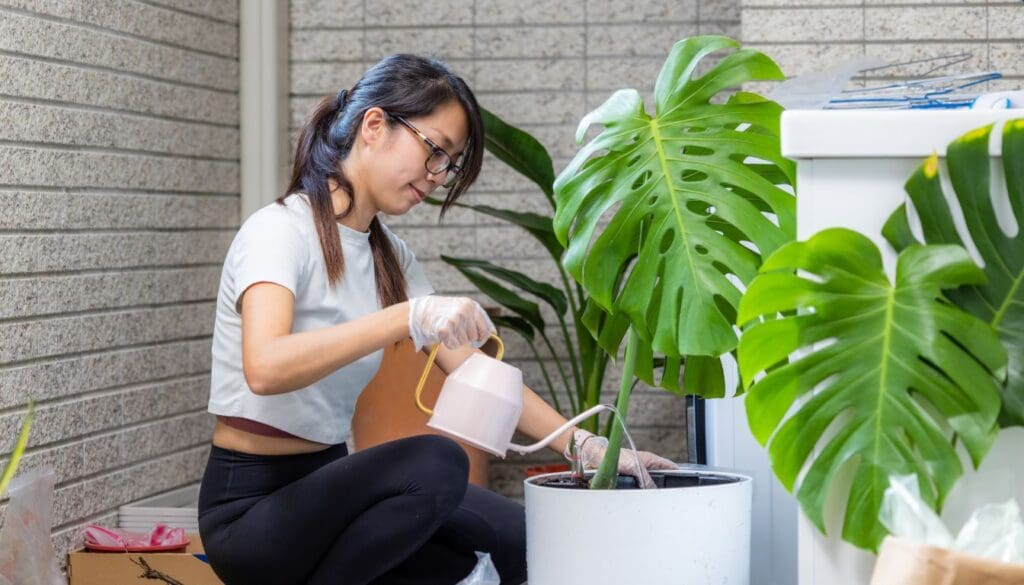
When it gets colder, I always cut back on how often I water my plants. Most plants just don’t need as much water when they’re not growing as quickly.
I usually water once every 10 to 14 days during these cooler months. This gives the soil a chance to dry out, which is a lifesaver for root health.
It’s tempting to stick to the same routine all year, but that’s a recipe for soggy roots. Too much water can definitely make roots weak or even sick.
If I can’t remember when I last watered, I’ll set a quick reminder on my phone. That way, I don’t water out of habit or just because I’m bored.
I always check the soil first. If the top inch is dry, maybe it’s time, but if it’s damp, I wait.
Cutting back is such an easy change, but wow, it really helps. My plants seem to thank me for it.
In the cold, less is more. I let my plants chill out, and they bounce back strong in spring.
3) Use a moisture meter

Sometimes I just want to be extra sure I’m not overwatering, so I use a moisture meter. The XLUX Soil moisture meter is my go-to.
It’s kind of wild how the top of the soil can look bone dry, but underneath it’s still wet. The moisture meter tells me what’s really going on.
I poke the meter down near the roots, check the reading, and if it says “wet,” I hold off on watering.
No more guessing, which is honestly a relief. I don’t have to stress about whether I’m overdoing it or not.
The XLUX Soil moisture meter is straightforward, even for someone who’s never used one before. I like that it’s clear and easy to read.
Ever since I started using it, my plants look a lot healthier. Fewer yellow leaves, less droopiness—what’s not to like?
It also helps me save water. I only water when it’s actually needed.
Overall, this tool just makes watering safer and way less stressful. I just check, follow the reading, and move on.
4) Water early in the morning to reduce evaporation

I always try to water my plants early in the morning. The sun’s not out in full force, so there’s less evaporation.
Morning watering lets the soil soak up what it needs before things heat up. Plants get their drink, and less water is wasted.
I’ve noticed that watering early also helps keep mold and fungus away. The leaves dry out during the day, which is way better for them.
Cooler mornings mean water gets absorbed deeper. That’s what roots want.
If I water late in the day, more water just disappears into thin air. My plants end up thirstier, and I might accidentally overwater thinking they need more.
Getting into a morning watering routine helps me keep track. It’s just easier, and I feel like I’m giving my plants a good start.
When it’s cooler, the soil dries out even slower. So, watering in the morning matters even more in fall and winter.
Starting the day with watering just works for me. It’s a small thing, but it really helps.
5) Apply mulch to retain soil moisture
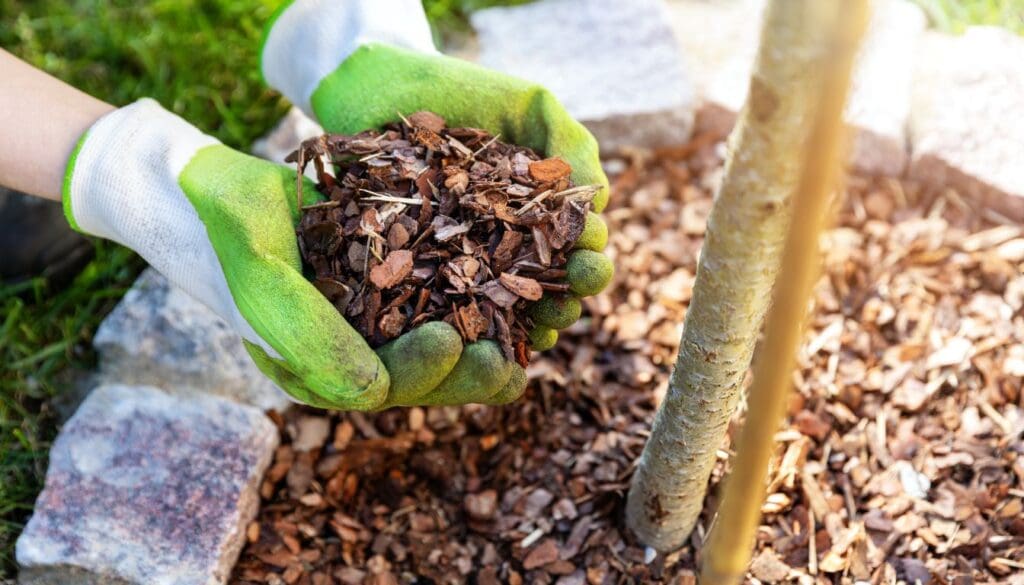
I’ve found that mulch is one of the easiest ways to lock in soil moisture during the cooler months. It acts like a little blanket for my garden, slowing down evaporation.
I usually add about two inches of mulch around my plants, but I keep it away from the stems. This helps protect roots from sudden temperature changes and means I don’t have to water as often.
Organic mulch—like shredded leaves, straw, or bark chips—works best for me. These materials break down slowly and even improve the soil over time.
With mulch in place, I notice the soil stays damp longer, even if it’s windy or sunny. That means less watering, and less risk of overdoing it.
I do check under the mulch sometimes, just to see how wet the soil is. It’s a good way to avoid guessing.
Mulch also keeps weeds down, so my plants get more water and nutrients. Keeping the soil moist and healthy just makes everything easier.
It doesn’t take long to add mulch, but honestly, the payoff is huge. My plants seem so much happier, and I stress less about watering.
6) Ensure pots have proper drainage holes

I always double-check that my pots have enough drainage holes before I plant anything. Poor drainage is just asking for root rot, especially when it’s cold and water evaporates slowly.
Good drainage keeps my plants safe. When I water, I want the extra to escape—not sit there and drown the roots.
I look for pots with holes at the base, or sometimes along the sides near the bottom. If I find a cute pot with no holes, I’ll just slip a plastic nursery pot inside. It keeps things tidy and lets water drain out.
If a pot doesn’t have a hole, I’ll grab a drill and make one. Gotta be careful not to crack it, but even a single hole makes a big difference.
Proper drainage means roots get what they need, and nothing extra. It also helps keep fungus and mold away.
Sometimes I add a layer of small rocks or broken pottery at the bottom. That keeps the drainage hole open and stops soil from clogging it up.
In the cooler months, soil dries out even slower, so drainage is extra important. Checking my pots and making sure they’re set up right helps me dodge overwatering issues.
Whenever I repot a plant or bring home a new one, drainage is the first thing I look at. It’s honestly one of my top plant care priorities.
Why Overwatering Happens in Cooler Months
Overwatering is more common in the cooler months for two main reasons: plants aren’t using as much water when it’s cold, and soil just stays wet longer. These changes can sneak up on you and lead to waterlogged roots.
Changes in Plant Water Needs
When it gets chilly, plants slow way down and don’t need as much water. My houseplants, for example, often go dormant in winter and just don’t drink as quickly.
If I stick to my summer watering schedule, I end up giving way too much in the cold months. Roots can stay wet for ages, and that’s a recipe for root rot or fungus.
When the weather cools, I keep an eye out for wilted leaves, yellowing, or a musty smell. Those are my cues to change up how much and how often I water.
Seasonal Soil Moisture Retention
Cooler temps slow down evaporation. Shorter days and less sunlight mean the soil just doesn’t dry out as fast.
Clay pots and well-draining soil help, but if things stay soggy, roots can suffocate. I always check if the top inch of soil is dry before watering again, either with my finger or a moisture meter.
Even if I use the same amount of water as before, the slow evaporation in cool months can leave roots soaked for days. Adjusting my watering habits is key if I want my plants to thrive.
Long-Term Effects of Overwatering
Too much water can cause real problems for my plants, even in the cooler months. When I keep the soil too wet, the damage goes far beyond just soggy leaves.
Root Rot and Fungal Diseases
Root rot is honestly one of the worst things that can happen from overwatering. My plants’ roots need air just as much as water, you know? If the soil hangs onto moisture for too long, there’s no air left, and suddenly it’s a party for fungi and bacteria.
Signs of root rot are pretty hard to miss: yellow leaves, soft and mushy roots, and sometimes an awful smell coming from the soil. Once root rot gets going, saving the plant is a real challenge since it spreads fast underground.
Fungal diseases like powdery mildew or blight also love damp conditions. You might spot white, fuzzy patches or weird dark spots on leaves and stems.
Some fungi go straight for the roots, while others attack the leaves or stems above the soil. Either way, it’s not great.
To dodge these problems, I always make sure my pots have drainage holes. I also never let water just sit in the saucer under my plants.
Impaired Plant Growth
Whenever I overwater, my plants just stop growing well. All that extra moisture pushes out the oxygen, so the roots can’t breathe or take up nutrients.
The result? Weak, droopy plants that are way more likely to get sick or just give up.
Stunted growth pops up a lot. Leaves turn yellow or drop off before their time.
Sometimes, flowers refuse to bloom, or the plant just sits there and does nothing. Overwatered plants can even get soft spots that go brown or black.
Here’s what I keep an eye out for:
- Slow or no new growth
- Yellowing leaves or sudden leaf drop
Weak stems that flop over are another red flag.
If I notice these things, I start questioning my watering routine and usually let the soil dry out a bit longer before the next round.
Frequently Asked Questions
I try to keep things simple to avoid overwatering, especially when it gets chilly. Let’s tackle some common questions with practical, real-world tips.
How often should I water my indoor plants during the cooler months?
Most of the time, I water indoor plants every 10 to 14 days once it cools down. But honestly, I always use the finger test—just poke my finger into the soil.
If those top couple of inches are dry, that’s my cue to water.
What are the signs of overwatering, and how can I help my plants recover?
Yellow leaves, wilted stems, and a musty smell are dead giveaways. If I spot these, I snip off the yellow leaves and let the soil dry out before watering again.
And of course, I double-check that the pots have good drainage.
What are effective ways to maintain soil moisture without causing waterlogging?
I like to use mulch on top of the soil—it helps hold in moisture without drowning the roots. When I’m not sure, I grab a moisture meter to check how wet things are.
It’s all about keeping the soil just right—not too wet, not too dry.
Are there any special care instructions for watering outdoor plants in winter?
I always water early in the morning so the roots don’t freeze overnight. I only water if the soil feels dry a couple inches down, and I skip watering if a freeze is coming.
Mulch is a lifesaver here too, since it keeps the soil from drying out too quickly.
What should I do if I’ve overwatered my plants to help them heal?
If I mess up and overwater, I dump out any extra water from trays or saucers. Then I move the plant somewhere bright and hold off on watering until the soil dries out.
Sometimes, if things look really bad, I’ll even take the plant out of its pot to let the roots air out.
Does the proximity to the window affect plant watering needs in the winter?
Yeah, it actually does. If your plant’s sitting by a window—especially one that’s a bit drafty or cold—it probably won’t dry out as quickly, so it might not need as much water.
Honestly, I just check the soil moisture every time instead of following some strict schedule. It’s a bit more work, but plants can be unpredictable, right?
Recommended Garden Supplies
| Product Image | Our Recommended Gardening Supplies | Check Offers! |
|---|---|---|
Top Top
Top
Top
Top
Top
Top
Top
Top | rePotme Houseplant and Tropical Classic Potting Soil Mix | Check Offer On Amazon |
 Top
Top
Top
Top
Top
Top
Top
Top | Espoma Organic Indoor Plant Food | Check Offer On Amazon |
 Top
Top
Top
Top
Top
Top
Top
Top | GooingTop LED Grow Light 6000K Full Spectrum Clip Plant Growing Lamp | Check Offer On Amazon |
 Top
Top
Top
Top
Top
Top
Top
Top | Soil Moisture Meter | Check Offer On Amazon |
 Top
Top
Top
Top
Top
Top
Top
Top | Govee Hygrometer Thermometer, Bluetooth Enabled! | Check Offer On Amazon |
 Top
Top | LEVOIT Humidifiers for Large Room(Best For Plants) | Check Offer On Amazon |
 Top
Top
Top
Top
Top
Top
Top
Top | Upgraded DIY Automatic Drip Irrigation Kit, 15 Potted Houseplants Support | Check Offer On Amazon |
 Top
Top
Top
Top
Top
Top
Top
Top | Stainless Steel Heavy Duty Gardening Tool Set | Check Offer On Amazon |
 Top
Top
Top
Top
Top
Top
Top
Top | Bonide Insecticidal Soap | Check Offer On Amazon |
 Top
Top
Top
Top
Top
Top
Top
Top | Bonide 32 oz Spray Neem Oil for Organic Gardening | Check Offer On Amazon |
 Top
Top
Top
Top
Top
Top
Top
Top | Garden Safe Fungicide | Check Offer On Amazon |

